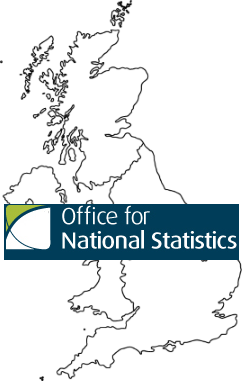Use of administrative data shows EU migration was much higher than previously estimated
The Office for National Statistics (ONS) on Friday released several important reports detailing its current research and new methodology for estimating international migration, which is substantially changed from the previous methodology used by the ONS.
 A useful overview report, available here, summarises the ONS's transformation of its population and migration statistics, as it moves away from the previous International Passenger Survey (IPS) to the new admin-based migration estimates (ABMEs). The change has been accelerated by the Covid-19 pandemic.
A useful overview report, available here, summarises the ONS's transformation of its population and migration statistics, as it moves away from the previous International Passenger Survey (IPS) to the new admin-based migration estimates (ABMEs). The change has been accelerated by the Covid-19 pandemic.
In a separate report International migration: developing our approach for producing admin-based migration estimates, which you can read online here, the ONS explains: "Using administrative data to measure international migration presents a substantial change in methodology, and it is important that this is recognised when comparing this new approach against previous estimates. Until now, estimates based on the International Passenger Survey (IPS) record migrants' intentions to remain in or out of the UK in the next 12 months. Our new approach, based upon administrative data, reports on the observed length of activities within these datasets to estimate migration into and out of the UK. This has the benefit of removing uncertainty around migrant intentions where administrative data are based on actual observed patterns of behaviour."
The new ONS method uses Home Office border data and, in particular, data from the government's Registration and Population Interaction Database or RAPID.
A further report on Methods for measuring international migration using RAPID administrative data, available here, states: "The Registration and Population Interaction Database (RAPID) is created by the Department for Work and Pensions (DWP) to provide a single coherent view of citizens' interactions across the breadth of systems in the DWP, HM Revenue and Customs (HMRC) and local authorities via Housing Benefit. RAPID covers everyone with a National Insurance number (NINo) and for each person, the number of weeks of 'activity' within these systems is summarised in each tax year from the one that ended in 2011 to the most recent tax year available (currently the one that ended in 2020)."
The report explains how the ONS is now focusing on RAPID data to estimate international migration.
There's plenty to read from the ONS so you may wish to also see a usefully short summary here from the Migration Observatory at the University of Oxford. It notes that the ONS's overall new estimate of net migration to the UK from March 2012 to March 2020 is only slightly higher than previous estimates (an increase of 15%), but EU migration makes up a much larger share of the total than previously estimated. In contrast, non-EU migration is lower than previously estimated.
The Migration Observatory stated: "Using the new method, ONS estimates that net EU migration averaged 216,000 from during the 9-year period ending in March 2020. This is 93,000 or 76% higher than previous survey-based figures (which had themselves already been revised upwards previously)."
The Home Office reported last week that it has now had over 5 million applications to the EU Settlement Scheme. Less than 5 per cent of those were repeat applications. Professor Jonathan Portes of King's College London said on Twitter that this "[i]mplies that the number of EU nationals resident in the UK pre-Brexit was *far* higher than published estimates."
Madeleine Sumption, the director of the Migration Observatory, said the new ONS publications "should really boost our confidence that UK migration statistics are getting more accurate and more useful for informing the public debate."
In terms of the latest net migration figures from the ONS for the year ending June 2020, Liz McKeown of the ONS highlighted in a blog post on Friday:
"The 12 months leading up to year ending June 2020 were unprecedented in many respects, not least in terms of migration and international travel …
"Net migration, largely driven by non-EU arrivals but also some British citizens coming home before the pandemic fully hit the UK, was higher than the historical average up to March 2020. Our latest analysis of international migration shows that, to mid-year 2020 net migration was around 282,000 – which largely reflects the pre-pandemic period. If we look specifically at the patterns following March 2020, we can see a notable change due to the impact of travel restrictions, with net migration for quarter 2 around -50,000 (this is the sum of the central modelled estimates of net migration for April, May and June 2020).
"Taking this data into account, our preliminary analysis suggests the UK population grew to 67.1million by mid-2020 – a 0.5% annual increase from mid-2019 – marking one of the smallest increases seen in the context of historical trends. This reflects a higher number of deaths and a continued decrease in the number of births being offset by a higher level of net international migration."